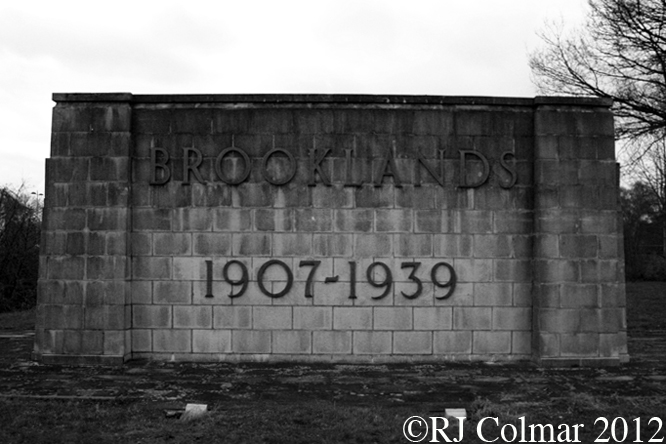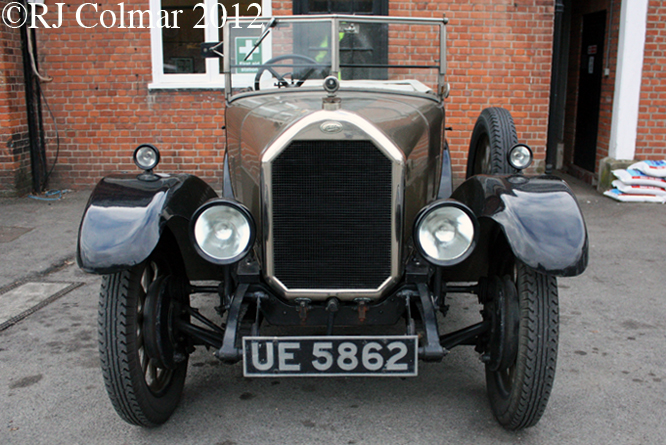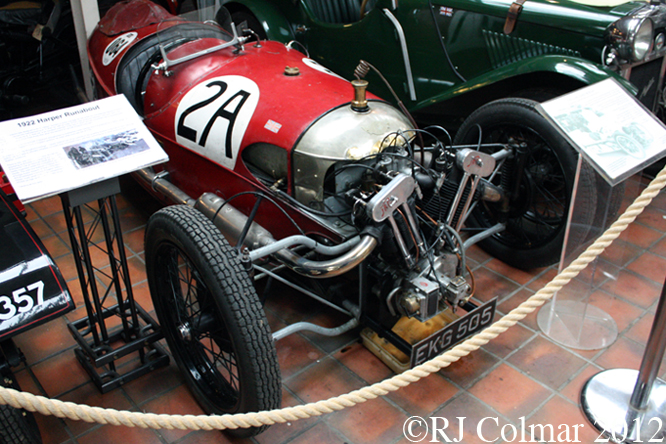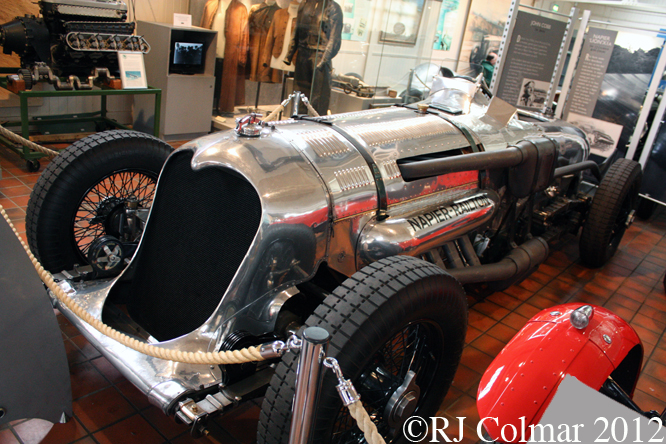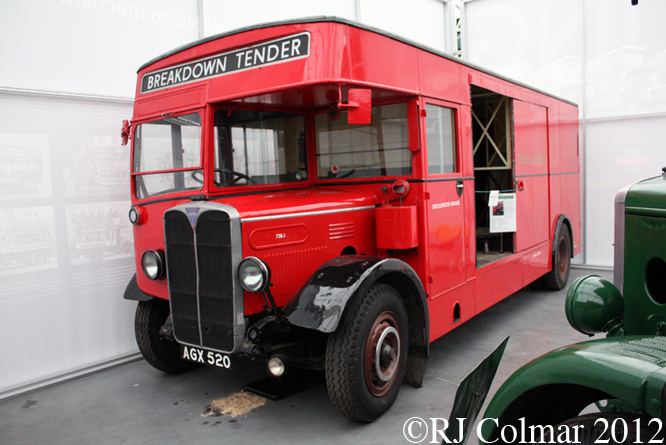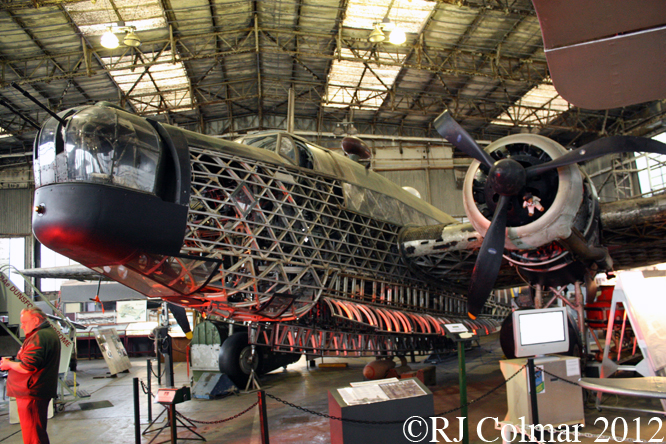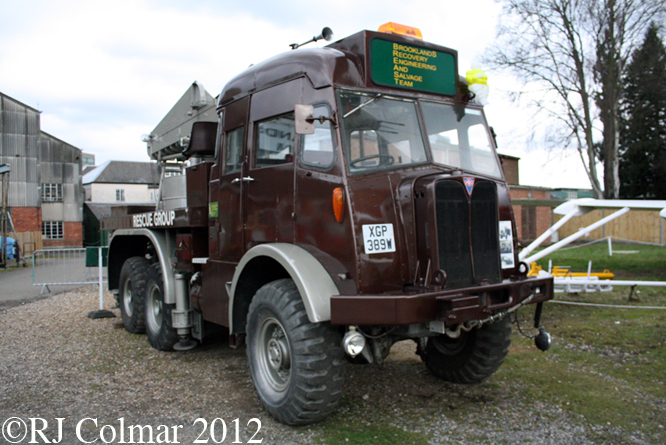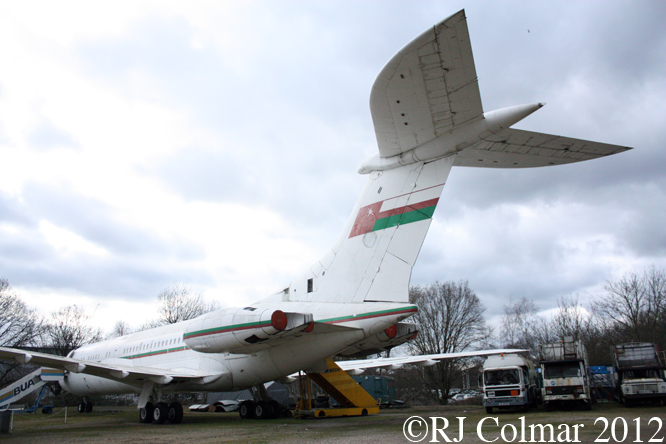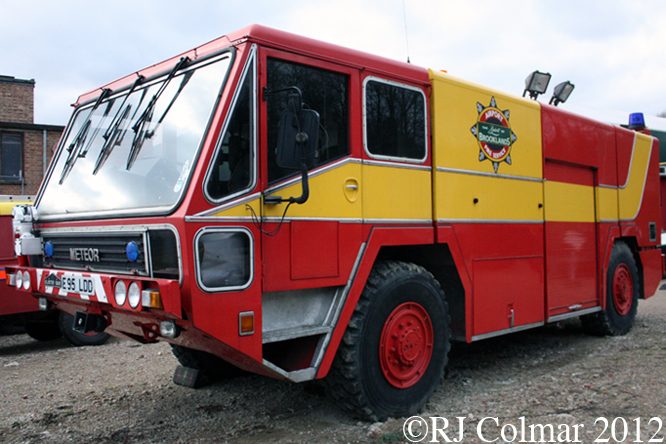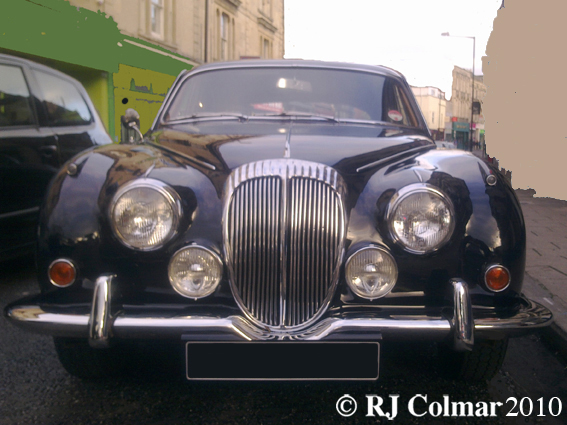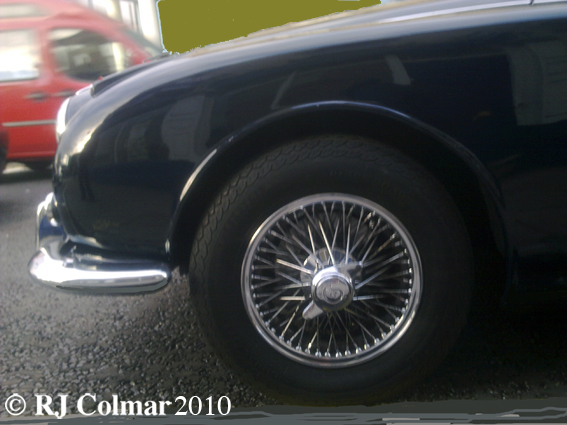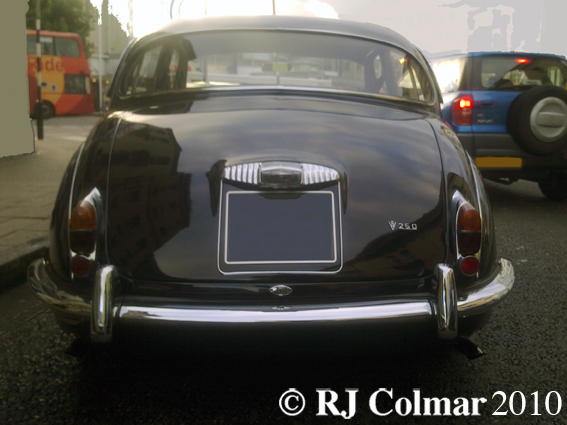Today’s post looks at some of the non combatants seen at Castle Combe’s Autumn Classic meeting a couple of weeks ago.
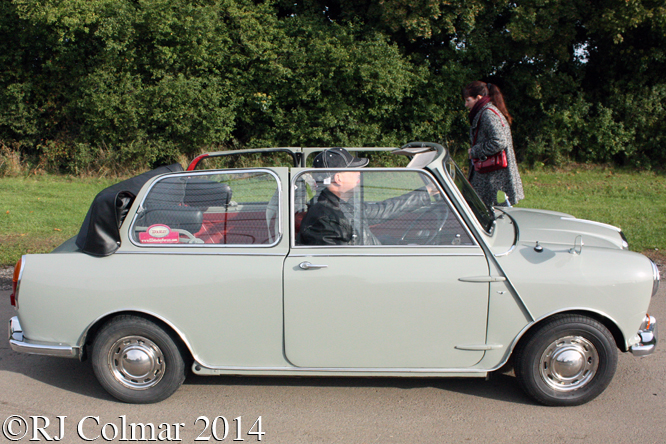
The story behind the 57 1966 Wolseley Hornet Crayford convertibles has all the makings of a great movie seeing as it involves a global baked bean brand, an exclusive deal with a company operating out of two private garages in London and a nudist colony, the rest of the details will have to wait for a future blog.
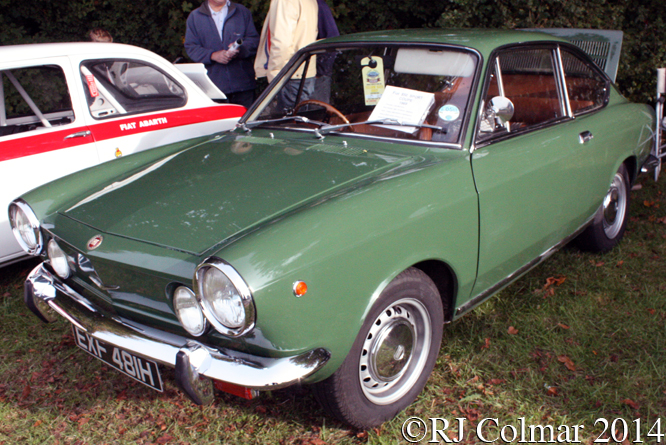
At my very first race meeting out in Zambia one of the more unlikely competitors drove a FIAT 850 Coupé like the 1969 example above on the Bristol Pegasus Motor Club stand.
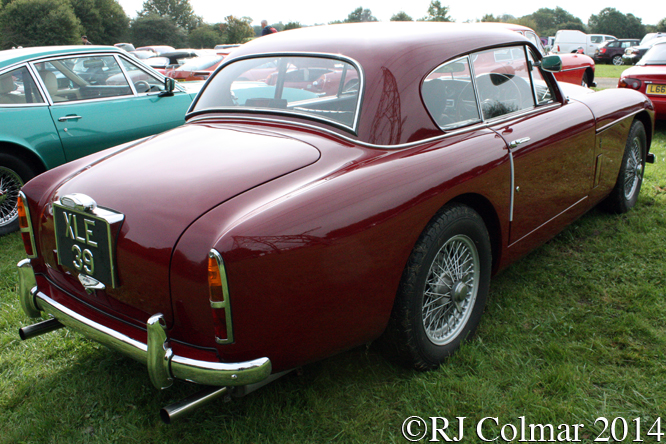
The 1959 Aston Martin Fixed Head Coupé with a Tickford notch body is an extremely rare vehicle, only five were ever built.
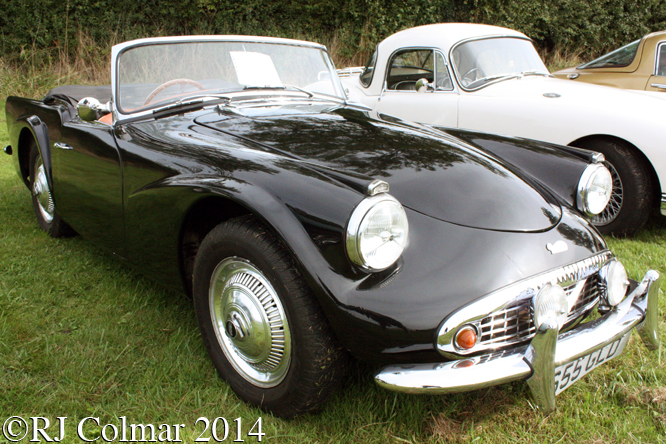
If I had any spare cash I’d be seriously tempted to buy this 1963 Daimler SP250 which has just 38,000 miles on the clock, if you would like to become it’s fifth owner I have the contact details of the vendor.
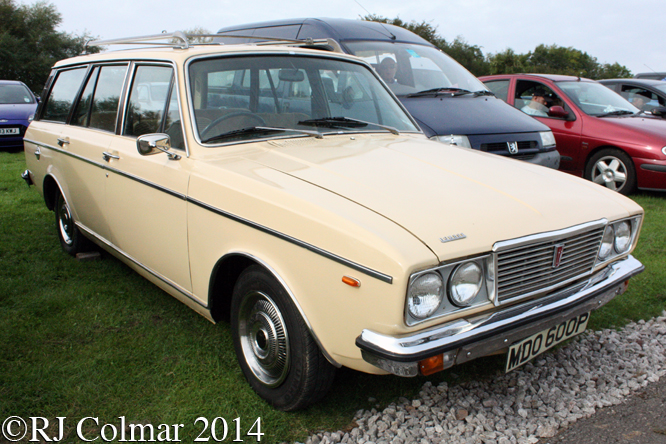
Slightly out of period was this 1976 Humber Sceptre based on a design first seen in 1967. The Sceptre Estate first seen in 1974 was one of the earliest UK station wagons to feature a light in the loading area and a rear screen wiper, the Humber name disappeared under Chrysler UK’s post 1976 branding strategy.
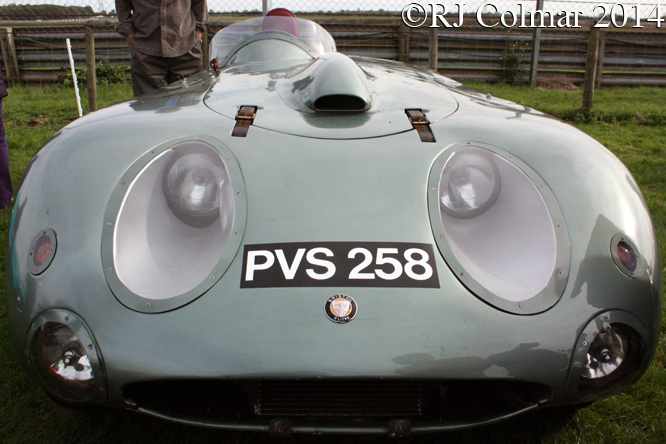
One car I have been waiting see first hand for some time is the sole remaining Bristol 450 belonging to Simon Draper, I believe this car finished 7th over all and first in the 2 litre class at the 1955 Le Mans 24 Hours. The prize money from the teams success was donated to victims of the 1955 Le Mans disaster after the team withdrew from the sport having scored two consecutive Le Mans class victories.
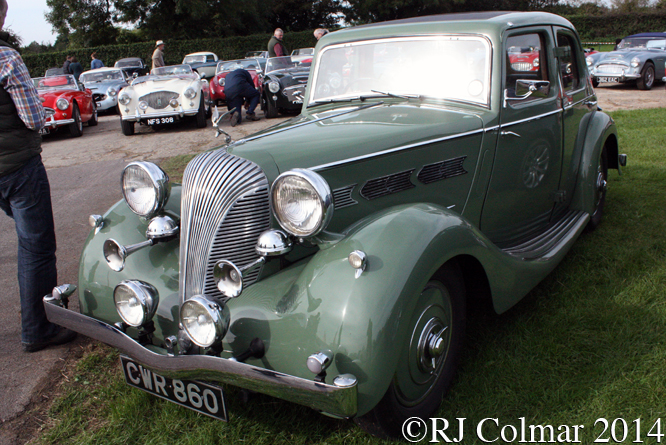
A nice quiz question what is the connection between all of the vehicles in this photograph ? Answer Donald Healey who was responsible for the Austin Healey’s in the back ground and the Hudson Terraplane inspired 1937 Triumph Dolomite Saloon in the foreground.
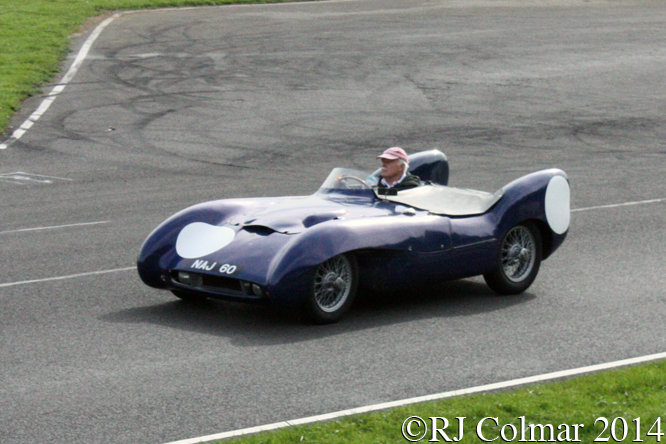
Former Concorde wind tunnel engineer and Historic Lotus Register Lotus Mk IX registrar Mike Marsden is seen above in his 1955 Lotus Mk IX which he has owned since 1967.
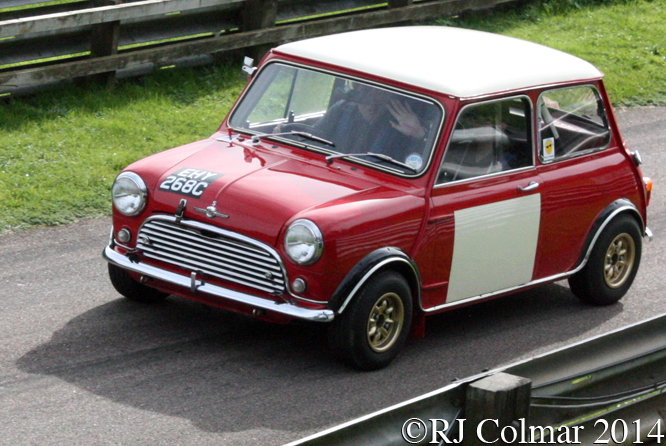
Dave Foster is seen coming into the pits above in his immaculate 1965 Morris Mini Cooper S which he has driven in competition for the last decade clocking up 10,000 competition miles.
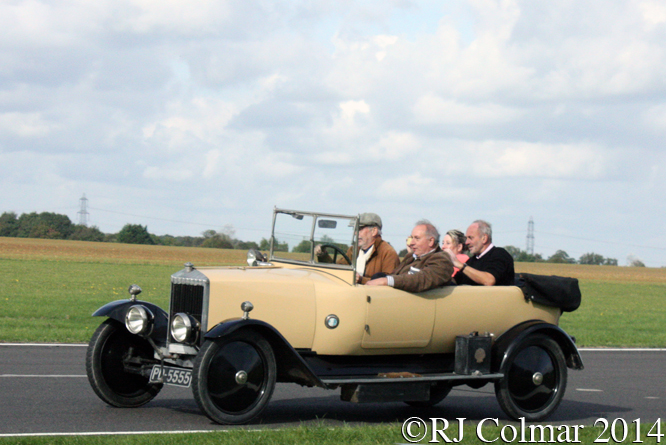
Until the Autumn Classic I’d never heard of a Horstman, it turns out they made nearly 3,000 vehicles just down the road in Bath between 1915 and 1929. These days Horstman, which patented a torsion bar suspension system for tracked military vehicles in 1922, continues to specialise in suspensions for military vehicles. The 1923 Horstman above is believed to have belonged to the companies founder Sidney Horstmann OBE.

In 1905 FIAT drew up plans for a world land speed record car which was to have two in line four cylinder motors producing upto 200 hp. The car never got built but nearly 20 years ago Graham Rankin undertook to build the car anyway. 13 years later he sold the unfinished project complete with a WW1 surplus 250hp Isotta Fraschini 16.5 litre / 1014 cui 6 cylinder aero motor to Mike Vardy who spent another seven years completing the FIAT Isotta Fraschini. Mike appeared to have great fun hanging the tail out on some parts of the circuit during his demonstration.
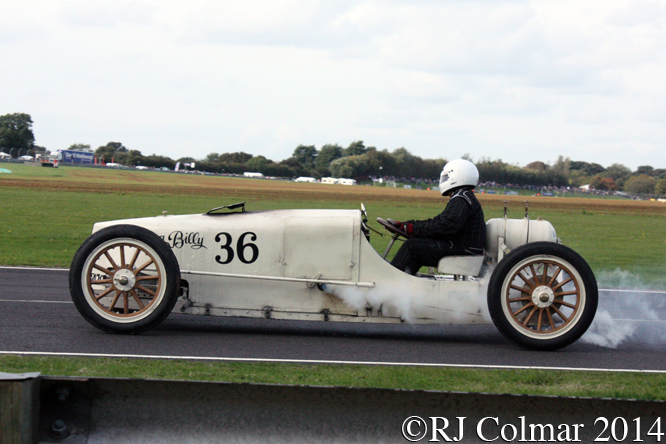
Finally last year I saw this recreation White Sprint Car at Race Retro, this year I finally got to see Dr Robert R. Dyke driving it at speed, only 60% of the boilers potential pressure was used but it still moved at an impressive speed given that it only has 2 x twelve inch brake drums on the rear axle.
Thanks for joining me on this “Classics @ Autumn Classic” edition of “Gettin’ a li’l psycho on tyres” I hope you will join me again tomorrow when I’ll be looking at a limited edition Hemi Challenger. Don’t forget to come back now !


